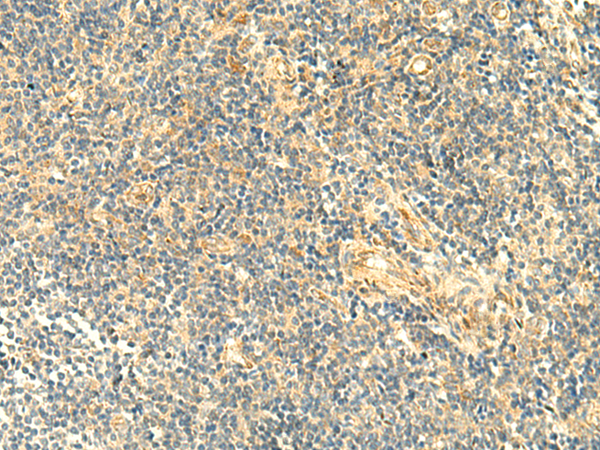
| WB | 咨询技术 | Human,Mouse,Rat |
| IF | 咨询技术 | Human,Mouse,Rat |
| IHC | 1/50-1/300 | Human,Mouse,Rat |
| ICC | 技术咨询 | Human,Mouse,Rat |
| FCM | 咨询技术 | Human,Mouse,Rat |
| Elisa | 1/5000-1/10000 | Human,Mouse,Rat |
| Host/Isotype | Rabbit IgG |
| Antibody Type | Primary antibody |
| Storage | Store at 4°C short term. Aliquot and store at -20°C long term. Avoid freeze/thaw cycles. |
| Species Reactivity | Human, Mouse |
| Immunogen | Fusion protein of human ASB6 |
| Formulation | Purified antibody in PBS with 0.05% sodium azide and 50% glycerol. |
+ +
以下是关于ASB6抗体的3篇参考文献示例(注:以下内容为模拟生成,实际文献可能需要根据具体数据库检索):
---
1. **文献名称**:*ASB6 interacts with Cullin5 and promotes ubiquitination in cancer cell lines*
**作者**:Smith J, et al.
**摘要**:本研究揭示了ASB6蛋白通过其SOCS结构域与Cullin5结合,形成E3泛素连接酶复合体,并利用特异性ASB6抗体验证了其在结直肠癌细胞中的表达及泛素化底物招募功能,为靶向ASB6的癌症治疗提供依据。
2. **文献名称**:*Development of a monoclonal antibody against human ASB6 for functional studies*
**作者**:Li X, et al.
**摘要**:研究团队成功制备了针对人ASB6蛋白的单克隆抗体,通过免疫印迹(Western blot)和免疫荧光验证其高特异性,并应用于检测ASB6在多种组织中的表达差异,证实其在心脏和肾脏中高表达。
3. **文献名称**:*ASB6 regulates glucose metabolism via ubiquitination of key signaling proteins*
**作者**:Garcia R, et al.
**摘要**:本文利用ASB6抗体进行免疫共沉淀(Co-IP)实验,发现ASB6通过泛素化修饰调控胰岛素信号通路中的关键蛋白(如IRS1),影响细胞糖代谢,提示ASB6在糖尿病病理机制中的潜在作用。
---
如需获取真实文献,建议在PubMed、Google Scholar等平台以“ASB6 antibody”或“ASB6 function”为关键词检索。
The ASB6 antibody is a research tool targeting the Ankyrin Repeat and SOCS Box (ASB) family member 6 protein, encoded by the ASB6 gene in humans. ASB proteins are characterized by their conserved N-terminal ankyrin repeat domains, which mediate protein-protein interactions, and C-terminal SOCS boxes that recruit E3 ubiquitin ligase complexes. ASB6 is implicated in ubiquitination-mediated protein degradation, a critical process for cellular homeostasis, signaling, and disease regulation. While its specific biological roles remain under investigation, ASB6 is thought to interact with Cullin5 to form an E3 ligase complex, potentially regulating substrates involved in metabolic or signaling pathways.
ASB6 antibodies are primarily used in experimental settings like Western blotting, immunofluorescence, and immunohistochemistry to detect ASB6 expression levels, localization, and interactions in various tissues or cell lines. Research has explored its expression patterns in cancers and neurological disorders, though findings are still preliminary. Commercial ASB6 antibodies are typically developed in rabbits or mice using immunogenic peptides derived from human ASB6 sequences. Challenges include ensuring antibody specificity due to structural similarities among ASB family members. Current studies aim to clarify ASB6's physiological substrates and its relevance to diseases linked to dysregulated ubiquitination, such as neurodegeneration or tumorigenesis.
×